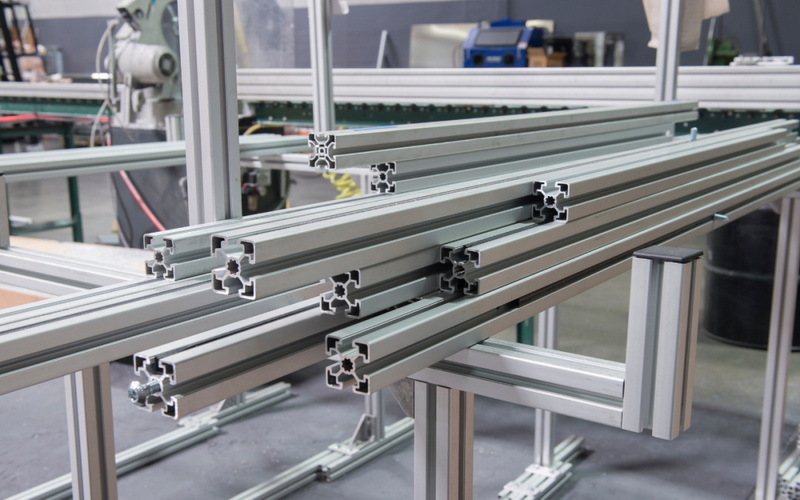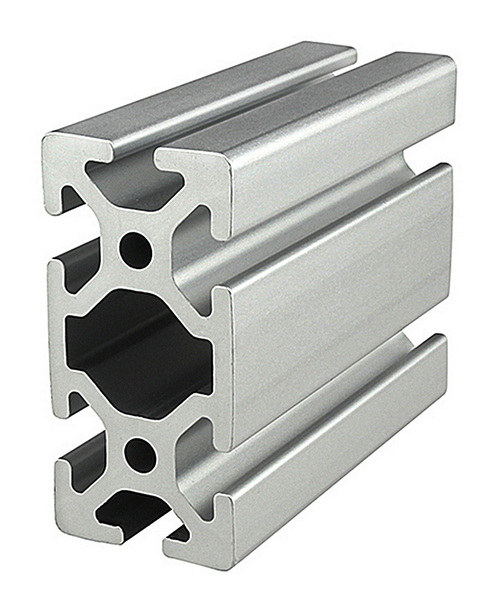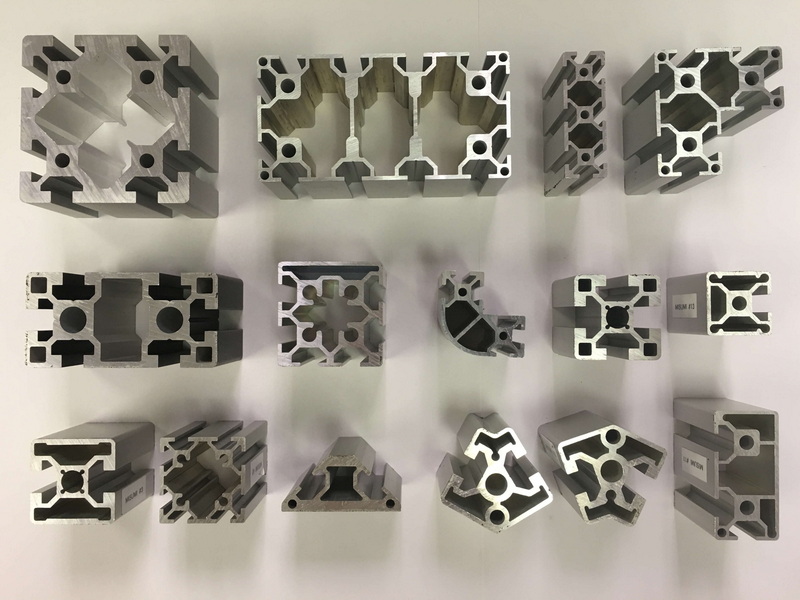Content Menu
● Introduction
● The Aluminum Extrusion Process
>> Step 1: Material Selection
>> Step 2: Heating the Billet
>> Step 3: Extrusion
>> Step 4: Cooling
>> Step 5: Cutting and Finishing
● Importance of the Aluminum Extrusion Process
>> Versatility
>> Lightweight and Strong
>> Cost-Effectiveness
>> Sustainability
>> Applications of Aluminum Extrusion
● Conclusion
● Frequently Asked Questions
>> 1. What is aluminum extrusion?
>> 2. Why is aluminum extrusion important?
>> 3. What are the common applications of aluminum extrusion?
>> 4. How does the aluminum extrusion process work?
>> 5. Can aluminum extrusion be customized?
Introduction
Aluminum extrusion is a manufacturing process that shapes aluminum alloy into a desired cross-sectional profile. This process is crucial in various industries due to its versatility, efficiency, and cost-effectiveness. The aluminum extrusion process allows for the creation of complex shapes that can be used in a wide range of applications, from construction to automotive and aerospace. In this article, we will explore the aluminum extrusion process in detail, its importance, and the benefits it offers to manufacturers and consumers alike.

The Aluminum Extrusion Process
The aluminum extrusion process involves several key steps that transform raw aluminum into finished products. Understanding these steps is essential for appreciating the significance of aluminum extrusion in modern manufacturing.
Step 1: Material Selection
The first step in the aluminum extrusion process is selecting the appropriate aluminum alloy. Different alloys have varying properties, such as strength, corrosion resistance, and workability. Commonly used alloys for extrusion include 6061, 6063, and 7075, each offering unique characteristics suitable for specific applications.
Step 2: Heating the Billet
Once the alloy is selected, the next step is to heat the aluminum billet. The billet is a solid piece of aluminum that is heated to a specific temperature, typically between 800°F and 1000°F. This heating process softens the aluminum, making it easier to extrude. Proper temperature control is crucial, as overheating can lead to defects in the final product.
Step 3: Extrusion
After heating, the softened aluminum billet is placed into an extrusion press. The press uses a hydraulic ram to force the billet through a die, which shapes the aluminum into the desired profile. This process can produce a wide variety of shapes, including tubes, angles, channels, and custom profiles. The extrusion process is highly efficient, allowing for continuous production of long lengths of aluminum profiles.
Step 4: Cooling
Once the aluminum has been extruded, it must be cooled to solidify the shape. This is typically done using air or water cooling methods. Proper cooling is essential to ensure the dimensional accuracy and mechanical properties of the extruded profile. Rapid cooling can also help prevent warping or distortion.
Step 5: Cutting and Finishing
After cooling, the extruded aluminum profile is cut to the desired length. This can be done using saws or other cutting tools. Following cutting, the profiles may undergo additional finishing processes, such as anodizing, painting, or machining, to enhance their appearance and performance. These finishing processes can also improve corrosion resistance and surface durability.

Importance of the Aluminum Extrusion Process
The aluminum extrusion process is vital for several reasons, making it a preferred choice in various industries.
Versatility
One of the most significant advantages of aluminum extrusion is its versatility. The process can create a wide range of shapes and sizes, allowing manufacturers to produce components tailored to specific applications. Whether it's for architectural elements, automotive parts, or electronic enclosures, aluminum extrusion can meet diverse design requirements.
Lightweight and Strong
Aluminum is known for its lightweight properties, making it an ideal material for applications where weight reduction is critical. Despite its lightness, aluminum is also strong and durable, providing excellent structural integrity. This combination of lightweight and strength is particularly beneficial in industries such as aerospace and automotive, where performance and fuel efficiency are paramount.
Cost-Effectiveness
The aluminum extrusion process is cost-effective due to its efficiency and the ability to produce long lengths of profiles with minimal waste. The continuous nature of the extrusion process allows for high production rates, reducing labor and material costs. Additionally, the durability of aluminum products can lead to lower maintenance and replacement costs over time.
Sustainability
Aluminum is a highly recyclable material, and the extrusion process can be adapted to use recycled aluminum. This not only reduces the environmental impact of aluminum production but also lowers energy consumption. The ability to recycle aluminum indefinitely without losing its properties makes it a sustainable choice for manufacturers and consumers alike.
Applications of Aluminum Extrusion
Aluminum extrusion is used in a wide variety of applications across different industries. Some common applications include:
- Construction: Aluminum extrusions are widely used in building facades, window frames, and structural components due to their strength and aesthetic appeal.
- Automotive: Lightweight aluminum extrusions are used in vehicle frames, chassis, and body panels to improve fuel efficiency and performance.
- Aerospace: The aerospace industry relies on aluminum extrusions for aircraft components, where weight reduction is critical for performance and safety.
- Electronics: Aluminum extrusions are used in electronic enclosures and heat sinks, providing excellent thermal management and protection for sensitive components.
Conclusion
The aluminum extrusion process is a crucial manufacturing technique that offers numerous benefits, including versatility, strength, cost-effectiveness, and sustainability. As industries continue to seek lightweight and durable materials, aluminum extrusion will play an increasingly important role in meeting these demands. Understanding the aluminum extrusion process and its significance can help manufacturers and consumers make informed decisions about their material choices.

Frequently Asked Questions
1. What is aluminum extrusion?
Aluminum extrusion is a manufacturing process that shapes aluminum alloy into a desired cross-sectional profile by forcing it through a die.
2. Why is aluminum extrusion important?
Aluminum extrusion is important due to its versatility, lightweight properties, cost-effectiveness, and sustainability, making it suitable for various applications across multiple industries.
3. What are the common applications of aluminum extrusion?
Common applications of aluminum extrusion include construction, automotive parts, aerospace components, and electronic enclosures.
4. How does the aluminum extrusion process work?
The aluminum extrusion process involves selecting the alloy, heating the billet, extruding it through a die, cooling the profile, and cutting it to the desired length.
5. Can aluminum extrusion be customized?
Yes, aluminum extrusion can be customized to create specific shapes and sizes tailored to meet the unique requirements of different projects and applications.






















